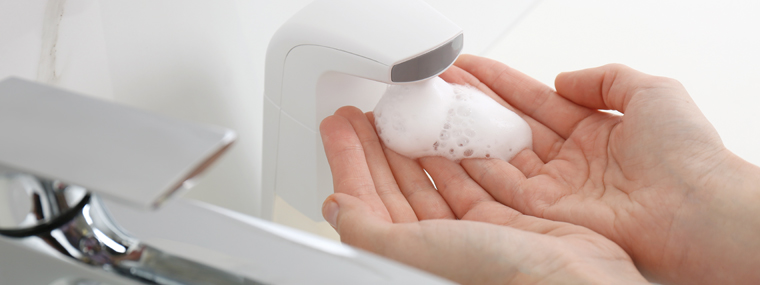
New Trends as a Result of the Pandemic
By Marcy Kravit, CMCA, AMS, PCAM, CFCAM / Published April 2022

Since the pandemic, there has been a demand for higher standards in establishing best practices in managing community associations. We have seen an increase in the number of residents dedicated to working from home, and this trend is sparking a shift in the demand for improved features and amenities. Residents are seeking this situation as an opportunity to enjoy their homes, and all are much more conscious of their health and environment.
The virus and the restrictions that accompany the challenges faced with it increased the number of requests for change. With heightened levels of stress, pandemic fatigue, and these requests, managers were forced to find new ways to cater to those residents who are spending more time at home and for those who are working from home. Immediate steps were taken, searching for long-term solutions for the health, safety, and well-being of residents.
Areas of change included touchless technology, security, efficiency, smart elevators, mobile access control, air filtration and ventilation, UV lighting, hygiene, frequent and improved sanitization, CDC-required cleaning methods, and maximizing the use of outdoor spaces, just to name a few.
One of the biggest trends was using mobile devices to communicate, streamline, and manage access control. With the use of a mobile app, there is flexibility to manage access for both residents, gatehouses, and front desk staff.
Application-based access control is an ideal solution for managing access to package retrieval and use of the amenities, such as the fitness centers, swimming pools, clubhouses, etc. The pandemic boosted the need for contactless and touchless solutions, including sensors, biometric facial scanning, mobile credentials, and motion detection. Some features allow activation with a simple hand gesture! Touch-free functionality is a bonus and health safety measure. Some hands-free products include hand dryers, faucets, toilets, door operators, and elevator controls in the common areas.
It is becoming more and more common that many are taking advantage of smart elevators that include touchless elevator systems and doors. The possibility of contracting the virus from touching surfaces meant that people quickly learned to press elevator buttons with their elbows!
Airborne germs required mitigation as well. Maintenance crews investigated the installation of hospital-grade UV-C/HEPA air filters. Many considered the option of installing UV lighting; since people must avoid exposure, it includes a motion sensor that would turn off the lighting automatically if someone is nearby.
Sanitizing and disinfecting high-touch surfaces by utilizing approved products, such as electrostatic fogging which removes impurities, dirt, and germs from surfaces and equipment, were vital. If not properly cleaned, these germs can pose a high health risk. What are some of the high-touch areas? Doorknobs/handles on both sides of locks, stairwell and staircase handrails, light switches, table surfaces, desks, sinks, toilets (especially toilet handles or buttons), TV remote controls, computers, front desk counters, gym equipment, etc. The EPA (Environmental Protection Agency) has added nearly 200 registered disinfectants to an online list of cleaning products that can help prevent the spread of the coronavirus.
Outdoor spaces such as walking trails, outdoor exercise areas, and remote coworking spaces have transitioned into “must haves” and are expected by many new home buyers flocking to Florida. Community events are also being reinvented, and an emphasis on outdoor activities such as yoga classes, family movie nights, and barbecues have become popular.
With so many people working from home, video conferencing tools have become a staple for meetings. Video calls and webinars improved community association communications. A stable, fast, and reliable internet service is required to handle the number of participants.
Virtual board of directors and association meetings became popular and provided a way for the owners to stay informed while social distancing. Going virtual allowed seasonal and international residents the opportunity to attend from anywhere. Online electronic voting (web-based) also became popular. This improved voter turnout, participation, and seamless verification of results.
Realtors conducted virtual tours of their current units and homes for sale. In addition, they featured the amenities of the association such as fitness centers, swimming pools, clubhouses, and outdoor spaces virtually. Online applications for screening and sale lease transfers became the norm. The association’s website became much more valuable and necessary.
Living in close quarters required managers to navigate through some uncharted territory. Board members should always consult with their professional service providers, including their manager and attorney, on how to best handle preparing for and reacting to requests and new trends as a result of the pandemic.
Marcy Kravit, CMCA, AMS, PCAM, CFCAM
Education Program Director
Marcy Kravit has 20-plus years’ experience managing community associations in South Florida. She has established a reputation as being passionate about service, driven by challenges, and undeterred by obstacles. Marcy is committed to providing five-star service and educating others in raising the level of professionalism in the industry. She works for Hotwire as director of community association relations. Marcy has earned every higher education credential offered by CAI and is recognized by Florida Community Association Professionals (FCAP) as a CFCAM. Marcy is a contributing writer to the Florida Community Association Journal (FLCAJ) and serves FCAP as their education program director.




